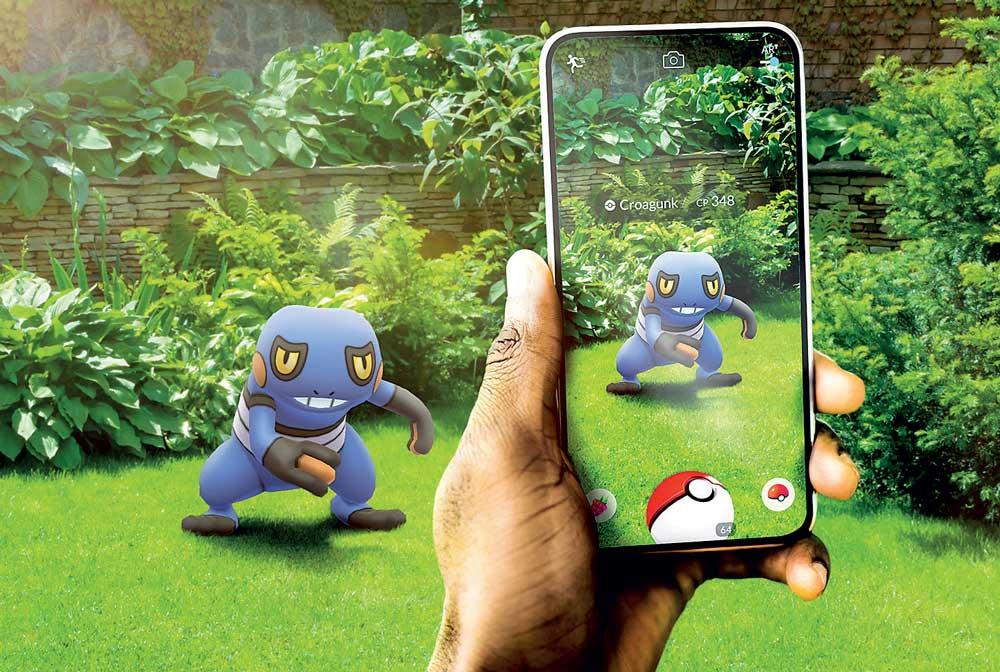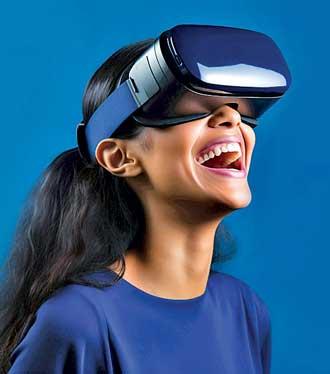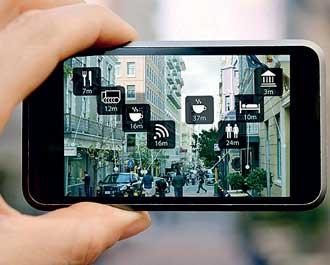16 Jul 2024 - {{hitsCtrl.values.hits}}

Imagine yourself battling a dragon in your living room, or exploring the pyramids from your couch. These aren’t fantasies anymore, but possibilities offered by AR and VR. While both create exciting digital experiences, they do it in fundamentally different ways.
Augmented Reality (AR) and Virtual Reality (VR) are technologies that are reshaping how we interact with digital content and the world around us. While both technologies immerse users in digital experiences, they differ significantly.
Imagine yourself battling a dragon in your living room, or exploring the pyramids from your couch. These aren’t fantasies anymore, but possibilities offered by AR and VR. While both create exciting digital experiences, they do it in fundamentally different ways.
AR overlays digital information onto the real world you see through your phone or headset. It doesn’t replace your surroundings but enhances them. Think of trying on virtual clothes in a store app, or seeing historical figures come to life when you point your phone at a museum exhibit.
VR is a complete digital immersion. It transports you entirely into a computer-generated world. You wear a headset that blocks out your surroundings and puts you in the heart of the virtual experience. Imagine scaling Mount Everest or swimming with dolphins, all from the comfort of your home. AR bridges the gap between the physical and digital worlds, while VR creates a whole new digital reality to explore.
Recent technological advancements, including improved display resolutions, more powerful processors, and sophisticated tracking systems, have made AR/VR more accessible and effective. The development of standalone headsets and integration with smartphones have further democratised these technologies, bringing them to a
broader audience.
Entertainment Reimagined
 The gaming industry has been at the forefront of AR/VR adoption. VR gaming offers unprecedented levels of immersion, allowing players to step inside their favourite game worlds. Popular titles like “Half-Life: Alyx” and “Beat Saber” have showcased VR’s potential to create unique, engaging experiences. AR gaming, exemplified by the phenomenon of “Pokémon GO,” has demonstrated how digital elements can enhance real-world environments, creating novel gameplay mechanics.
The gaming industry has been at the forefront of AR/VR adoption. VR gaming offers unprecedented levels of immersion, allowing players to step inside their favourite game worlds. Popular titles like “Half-Life: Alyx” and “Beat Saber” have showcased VR’s potential to create unique, engaging experiences. AR gaming, exemplified by the phenomenon of “Pokémon GO,” has demonstrated how digital elements can enhance real-world environments, creating novel gameplay mechanics.
Beyond gaming, AR/VR is transforming movie experiences through immersive storytelling. VR films place viewers at the centre of the action, allowing them to explore narratives from multiple perspectives. AR enhances traditional viewing experiences by providing interactive elements and additional content layered over the real world.
Other entertainment applications include virtual concerts, where fans can attend live performances from anywhere in the world, and AR-enhanced theme park experiences that blend physical attractions with digital overlays.
Revolutionising Education
AR/VR technologies are enhancing learning experiences by making abstract concepts tangible and interactive. Virtual field trips transport students to historical sites, distant planets, or inside the human body, offering experiences that were previously impossible or impractical. AR applications overlay information onto textbooks, bringing static diagrams to life and providing interactive 3D models.
In specialised training, VR simulations allow medical students to practice complex procedures without risk to patients, while engineering students can manipulate virtual prototypes. These technologies also have the potential to make education more accessible to remote or underprivileged communities by providing high-quality, immersive learning experiences regardless of physical location.
Transforming Healthcare
In healthcare, AR/VR applications are numerous and growing. Medical professionals use VR for training and simulations, practising complex surgeries in risk-free virtual environments. AR assists surgeons during operations by overlaying vital information and 3D visualisations of anatomy onto the patient.
VR therapy is showing promise in pain management, helping patients cope with chronic pain or distract them during painful procedures. In mental health treatment, VR exposure therapy is being used to treat phobias, PTSD, and anxiety disorders. AR and VR are also finding applications in physical rehabilitation, guiding patients through exercises and providing real-time feedback.
The entertainment industry has been at the forefront of AR/VR adoption, with VR gaming offering unparalleled immersion and AR games like Pokémon GO demonstrating how digital elements can enhance real-world environments. However, Kavindu de Silva, Founder of Black Mirage Studio and game developer and storyteller, emphasises that AR/VR’s potential extends far beyond entertainment. “In my experience in gaming, I’ve seen our goal shift from pixel art to immersive graphics, with VR and AR as the next frontier,” he says. “As a developer, I believe these technologies offer new realities for players to experience. I’m excited about VR’s potential to bring worlds like Harry Potter to life.” Kavindu anticipates AR/VR dominating the gaming industry in the next decade but also expresses caution about potential downsides, citing the importance of maintaining a healthy relationship with reality and avoiding VR addiction. “I’m mindful of the ethical concerns. While escaping reality can be fun, I believe balance is crucial. As seen in “Ready Player One,” VR addiction is a real risk. As these technologies become more immersive, I think we must ensure users maintain a healthy relationship with reality.”
Diverse Applications Across Industries
 Retail:Virtual try-ons - AR overlays clothing or makeup on customer images, allowing preview without physical trials
Retail:Virtual try-ons - AR overlays clothing or makeup on customer images, allowing preview without physical trials
Immersive shopping - VR creates virtual stores for customers to explore from home, mimicking in-person shopping
Real Estate:Virtual property tours - 360-degree views or VR experiences of properties, enabling remote exploration and saving time for buyers and sellers
Valuable during restrictions - Particularly useful when physical viewings are limited, as seen during the pandemic
Industrial Applications:
Complex machinery training - VR simulations for practising the operation of sophisticated equipment without risk
Maintenance procedure practice - AR guides workers through repair processes, improving accuracy and efficiency
Safe virtual environments - Allows repeated practice of dangerous or costly procedures without real-world consequences
AR and VR aren’t just reshaping reality—they’re creating new ones. As these technologies evolve, we stand on the brink of a revolution that will transform how we perceive, interact with, and understand our world. The future isn’t just coming—it’s already here, in pixels and polygons, waiting for us to step in and explore. Are you ready to redefine your reality?
21 Nov 2024 3 hours ago
21 Nov 2024 5 hours ago
21 Nov 2024 6 hours ago
21 Nov 2024 6 hours ago
21 Nov 2024 9 hours ago